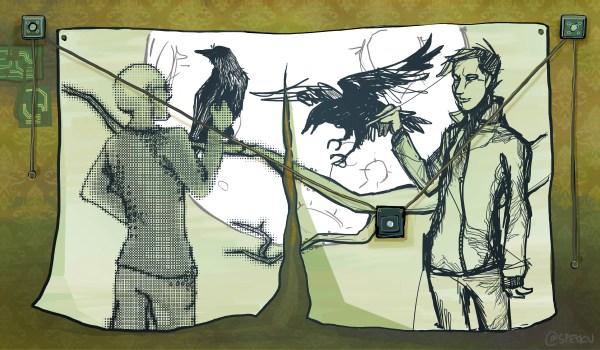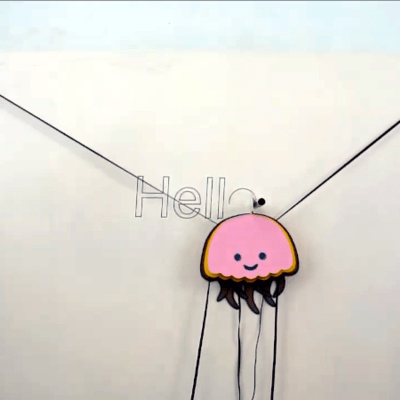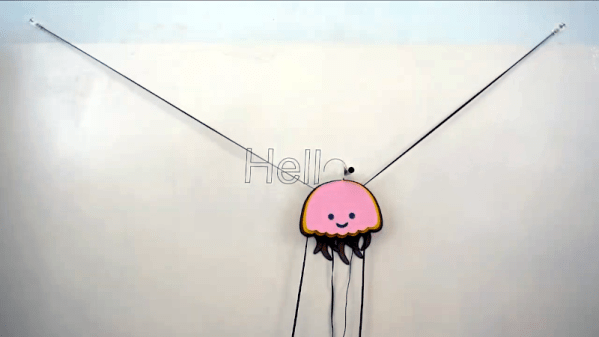We ran a story about a wall-mounted plotter bot this week, Mural. It’s a simple, but very well implemented, take on a theme that we’ve seen over and over again in various forms. Two lines, or in this case timing belts, hang the bot on a wall, and two motors drive it around. Maybe a servo pulls the pen in and out, but that’s about it. The rest is motor driving and code.
We were thinking about the first such bot we’ve ever seen, and couldn’t come up with anything earlier than Hektor, a spray-painting version of this idea by [Juerg Lehni]. And since then, it’s reappeared in numerous variations.
Some implementations mount the motors on the wall, some on the bot. There are various geometries and refinements to try to make the system behave more like a simple Cartesian one, but in the end, you always have to deal with a little bit of geometry, or just relish the not-quite-straight lines. (We have yet to see an implementation that maps out the nonlinearities using a webcam, for instance, but that would be cool.) If you’re feeling particularly reductionist, you can even do away with the pen-lifter entirely and simply draw everything as a connected line, Etch-a-Sketch style. Maslow CNC swaps out the pen for a router, and cuts wood.
What I love about this family of wall-plotter bots is that none of them are identical, but they all clearly share the same fundamental idea. You certainly wouldn’t call any one of them a “copy” of another, but they’re all related, like riffing off of the same piece of music, or painting the same haystack in different lighting conditions: robot jazz, or a study in various mechanical implementations of the same core concept. The collection of all wall bots is more than the sum of its parts, and you can learn something from each one. Have you made yours yet?
(Fantastic plotter-bot art by [Sarah Petkus] from her write-up ten years ago!)















